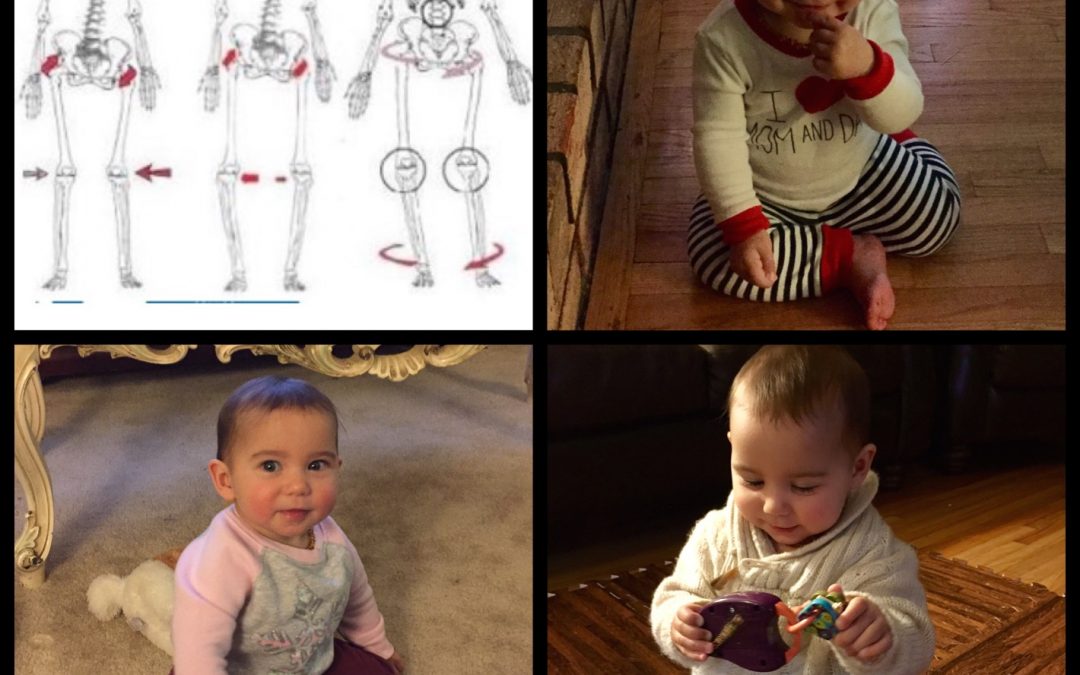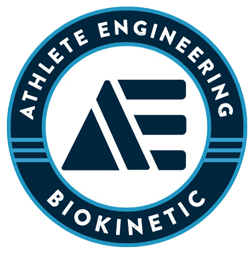The origin of an imbalance can start when a person is very young, even as a baby. Here is my nine month old daughter. As cute as she is, she is already developing an imbalance in her hips. In all of these pictures, you will notice that she has her left leg back and in internal rotation, and her right leg in front and in external rotation. This is now her go to position for sitting. She probably sat this way one day to give her some stability when learning to sit upright. Then it became a habit and the supporting muscles and ligaments strengthened and the opposite ones stretched to make the position comfortable. Now she has a strength imbalance and ingrained neuromuscular pattern. Every chance I get I try to switch her legs, or have her sit with both in front and then I coax her with a toy on her left side so that she gets some reps in on her left hip external rotators. If this imbalance continues, it will go in the wrong direction and will eventually rotate her pelvis, create a curvature in her spine, and on and on.
All athletes have imbalances. Some start as babies, others develop later. They can come from postural habits, such as standing on one leg, crossing one leg while sitting, carrying a bag on one shoulder, and more. They can also come your sport. Many sports require a repetitive unilateral movement, such as throwing or kicking. Over time, an athlete’s structure will be conditioned for that movement, however, will also be pulled out of optimal alignment. Another common cause of imbalances in structure are imbalanced strength training programs. For example, doing three horizontal pressing movements and only one pulling, or working prime movers and not the stabilizers.
To avoid imbalances and the injuries resulting from them, think about your postural habits throughout the day and night, think about your sport and analyze if the movement required is balanced bilaterally, analyze your strength training program for imbalances, and then create a program to correct all of the issues through new postural habits and movements. One quick example, if your are a soccer player and kick dominantly with your right leg, start off your practice and warmups by kicking a certain number of times with your left leg. I have fixed many lower back and other issues with this approach. Good luck and stay balanced.
Eat * Move * Think
Bio * Kinetic * Energy


